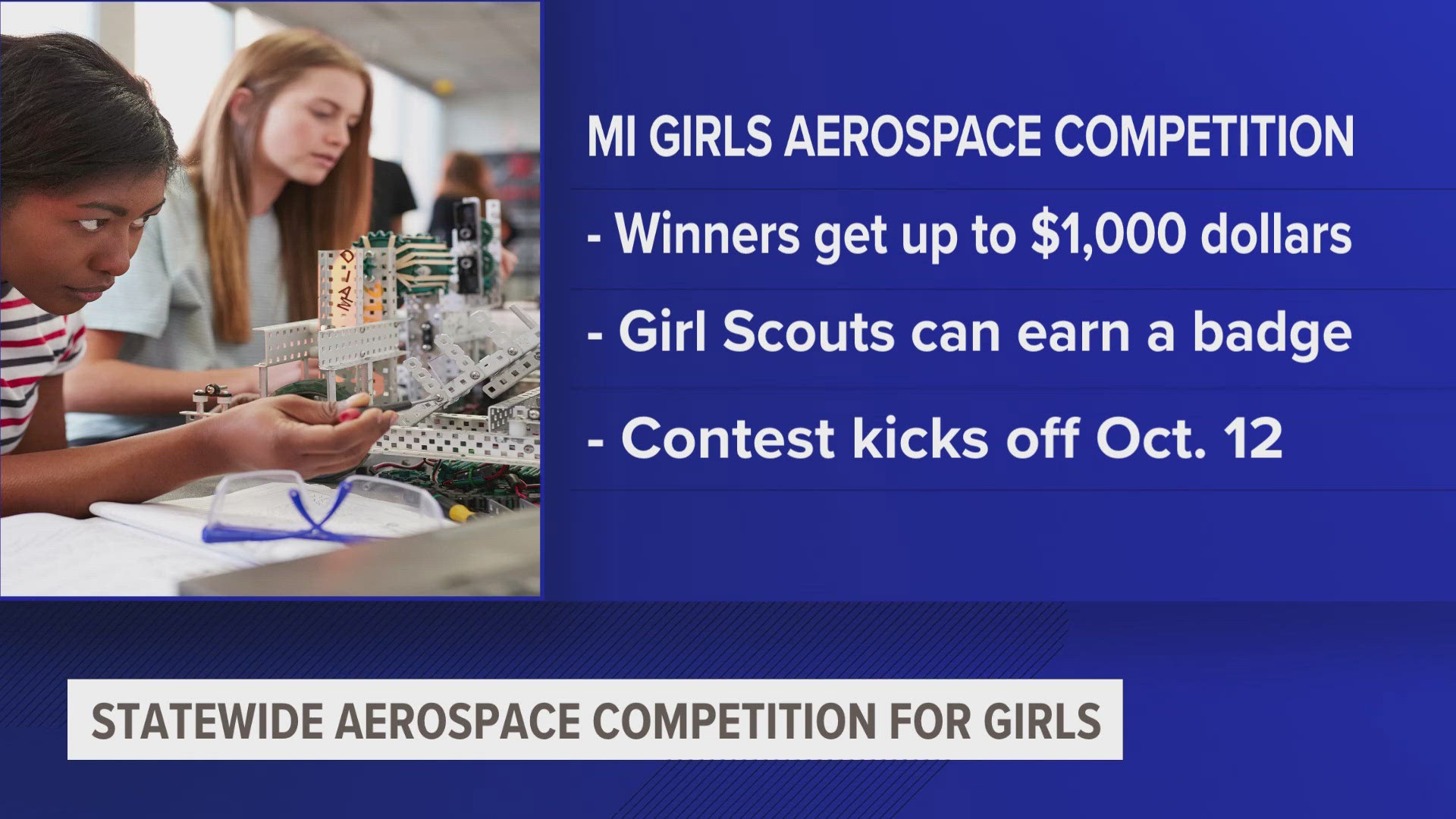MICHIGAN, USA — A statewide competition is putting Michigan girls’ engineering, creativity and teamwork to the test.
The Michigan Girls Future Flight Challenge gets underway for the third year in a row in October where each team has to come up with their best sustainable solution to a real-world problem. It's hosted by the Women of Aerospace Industry Association of Michigan (WAIAM).
Girl Scouts in the state, including those of Michigan’s Shore to Shore troops, can also earn their business jumpstart badge for tackling the challenge.
The competition officially begins on Oct. 12, and each group presents their completed project virtually on Nov. 9. Over those four weeks, each group engineers an aerospace design and develops business and marketing plans for their project.
In previous years, more than 47 cities across the state were represented. Nearly 10 of them were from West Michigan including Grand Rapids, Grand Haven, Holland, and Rockford.
Lissa Barron, co-founder of WAIAM, says the goal of strengthening the in-state aerospace talent pipeline is at the center of the contest.
“We’re looking at record-levels of production for the aerospace industry worldwide, and so it’d be great if a lot of that can be done in Michigan, and it already is being done in Michigan,” Barron told 13 ON YOUR SIDE. “We’re trying to let these young people know they won’t have to leave the state if they want to work in aerospace.
Team “Arctic Puffin,” a group who placed second overall in the 2023 challenge, came up with a creative solution to clean up the Great Lakes beaches. Their winning design raked in $600.
Together, the group of girls designed a solar-powered drone that used a net and sensors to pick up trash on the beaches and later, drop it into an incinerator. There, the trash could be turned to ash, ready to be repurposed as recycled material used for roads.
Demographic data from Data USA, an analytic visualization engine, revealed that out of more than 145,019 aerospace engineers in the country, only 13.6 percent of them were women in 2022. Those percentages were significantly lower (starting around two percent) for Asian, Black, Latinx and mixed-race identifying female engineers.
While the focus of the competition is aerospace innovation, Barron also emphasized that contestants with diverse interests including communications and even marketing can largely contribute to their team’s success.
“We want to be able to demonstrate to the girls that, not only are there engineering jobs in the aerospace industry, but this can appeal to girls with all kinds of interests if they’re interested in art, communications or business,” Baron said. “There is just a wide range of careers in the aerospace industry and also there’s a growing demand.”
The organization hosting this competition is also leading the charge on a new drone soccer initiative. Like the Michigan Girls Future Flight Challenge, the goal is to influence more students to pursue STEM careers.

